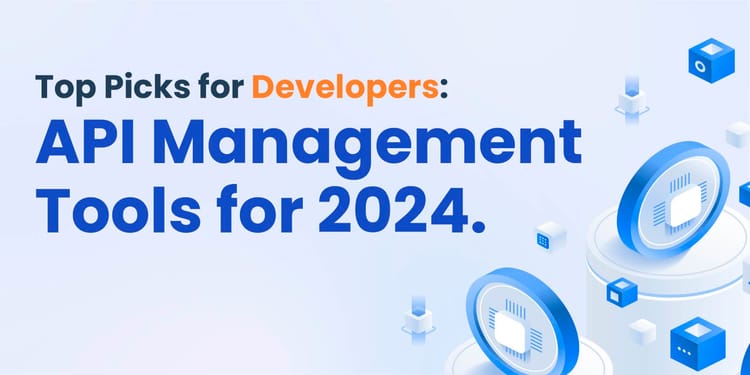In today's digital age, user experience (UX) plays a crucial role in the success of any online business. Users have come to expect fast, reliable, and seamless experiences while interacting with websites and applications.
Businesses can meet these expectations by prioritizing performance monitoring and Application Programming Interface (API) monitoring as key elements in their development and maintenance processes.
This article explores the significance of performance monitoring software and API monitoring tools in enhancing user experience and can contribute to these efforts.
Understanding User Experience (UX)
User experience (UX) refers to users' overall experience and satisfaction while interacting with a product or service. It encompasses usability, accessibility, responsiveness, and the overall enjoyment users derive from interactions.
When users encounter poor UX, such as slow loading times, unresponsive interfaces, or frequent errors, it can lead to frustration, negative impressions, and a decline in customer loyalty. Businesses must leverage performance monitoring software and API monitoring tools to address these problems.
By employing these tools, organizations can gain insights into the performance of their systems, identify and resolve issues that impact UX, and ultimately deliver a seamless and satisfying experience for their users.
Performance Monitoring Software
Performance monitoring software is vital in monitoring and optimizing websites' and applications' speed, responsiveness, and reliability. These tools provide real-time insights into performance metrics, such as page load times, server response times, and network latency.
By proactively monitoring performance through performance monitoring software and API performance monitoring tools, businesses can identify bottlenecks, diagnose issues, optimize their systems, and make data-driven decisions to deliver a superior user experience.
Treble, a lightweight SDK designed to assist product and engineering teams build, ship, and maintain REST-based APIs faster, can significantly contribute to performance monitoring efforts. With Treblle, organizations can gain visibility into the performance of their API endpoints, track response times, and monitor error rates.
By integrating Treblle into their development workflow, businesses can proactively identify and resolve performance issues, ensuring optimal API performance and enhancing the overall user experience.
API Monitoring Tools
APIs have become fundamental to modern software development, enabling seamless communication and data exchange between different systems and applications. In 2022, the worldwide market size of Integration Platform as a Service (IPaaS) was valued at USD 5281.71 million. It is projected to grow at a compound annual growth rate (CAGR) of 34.18% during the forecast period, with an estimated USD 30822.3 million by 2028.
API monitoring tools help ensure APIs' availability, reliability, and responsiveness. These tools monitor API endpoints, track response times, and detect errors or anomalies, allowing businesses to address issues promptly and deliver a consistent user experience.
Incorporating Treblle into API monitoring practices can streamline the monitoring process further. With Treblle's lightweight SDK, developers can easily track and analyze API performance metrics, including response times, error rates, and throughput. By leveraging Treblle's automated REST API testing capabilities, organizations can ensure APIs are dependable and robust. The platform can also proactively identify and rectify API performance issues, ultimately enhancing the user experience.
Best Practices for Implementing Performance Monitoring and API Monitoring
Businesses can adopt the following best practices to maximize the benefits of performance monitoring software and API monitoring tools:
Selecting the right monitoring tools
The first step is to carefully evaluate and choose API monitor tools that align with your needs. Consider factors such as scalability, ease of integration with existing systems, and the ability to monitor the technologies and platforms used in your applications. By selecting the right tools, you can ensure they effectively meet your monitoring requirements.
Setting up effective monitoring strategies and metrics
Define clear monitoring strategies and establish key performance indicators (KPIs) that align with your business goals. Determine the application performance monitoring metrics that matter most to your users and set benchmarks to measure and track performance over time. This approach allows you to clearly understand your application's performance and identify areas that need improvement.
Analyzing and interpreting monitoring data
Regularly analyze the monitoring data collected from your performance monitoring software and API monitoring tools. Look for trends, patterns, and anomalies that can provide insights into potential issues or areas for improvement. Analyzing the data allows you to identify performance bottlenecks, optimize critical processes, and enhance the overall user experience.
Incorporating monitoring results into UX optimization efforts
The data collected from monitoring should not remain isolated. It should be utilized to drive improvements in user experience. Use the insights gained from monitoring to optimize user interfaces, streamline workflows, and enhance the overall usability of your applications. You can deliver a more seamless and satisfying user experience by incorporating monitoring results into your UX optimization efforts.
Remember, these API monitoring best practices are not one-time actions but should be part of an ongoing process. Regularly reassess your monitoring tools, strategies, and metrics to ensure they align with evolving business needs and technological advancements.
Integrating Performance Monitoring and API Monitoring into Development Workflow
To successfully integrate performance monitoring and API monitoring into the development workflow, organizations should consider the following:
- Collaboration between teams: Establish effective communication and collaboration channels between engineering, operations, and UX teams. Foster a culture of shared responsibility for monitoring and improving performance throughout development.
- Early integration of monitoring: Integrate monitoring practices from the early stages of development, including during the design and prototyping phase. This practice allows for identifying and resolving performance bottlenecks and UX issues before they become ingrained in the system.
- Continuous monitoring: Implement continuous monitoring throughout the development lifecycle, including during testing, staging, and production phases. This best practice ensures that performance and API issues are identified and solved promptly.
- Real-time monitoring data: Utilize performance monitoring software and API monitoring tools, such as Treblle's lightweight SDK, to provide real-time monitoring data. This setup gives software developers and stakeholders immediate visibility into system performance, API behavior, and user experience.
- Collaboration through monitoring data: Leverage the monitoring data to facilitate team collaboration. Performance and API monitoring metrics can serve as objective benchmarks for discussions and decision-making, allowing teams to align their efforts toward enhancing user experience.
- Proactive issue resolution: Use the insights gained from monitoring to proactively address performance bottlenecks, API issues, and UX challenges. Regularly review monitoring data, conduct root cause analysis, and continuously implement optimization strategies to improve the system's performance.
Integrating performance monitoring and API monitoring into the development workflow allows organizations to optimize performance and enhance user experience proactively.
Treblle's lightweight SDK can facilitate this integration by seamlessly integrating into existing development processes, providing real-time monitoring data, and promoting effective team collaboration.

Future Trends and Innovations in Performance Monitoring and API Monitoring
As technology continues to evolve, performance monitoring and API monitoring tools will undergo advancements to meet changing user expectations. Here are some future trends and innovations in performance monitoring and API monitoring:
Serverless computing
Serverless computing is a new cloud computing paradigm that is gaining popularity. Serverless computing allows developers to run code without worrying about provisioning or managing servers. This setup can lead to significant cost savings and performance improvements.
Predictive analytics
Predictive analytics is another emerging trend in performance monitoring. By analyzing historical data, predictive analytics tools can identify patterns that indicate future performance issues. Businesses can use this information to take preventive measures to avoid performance problems or to mitigate their impact.
Cloud-based monitoring
Cloud-based monitoring is becoming increasingly popular as it offers several advantages over traditional on-premises monitoring solutions. Cloud-based monitoring solutions are scalable, easy to deploy, and accessible anywhere. They also offer more features and functionality than traditional on-premises solutions.
AI-driven monitoring
AI and machine learning (ML) are being increasingly used to automate performance monitoring tasks and identify potential problems before they occur. For example, AI-powered dev tools can analyze historical data to identify patterns that indicate future performance issues. They can also use these smart tools to create predictive models that predict when and where performance problems will likely occur.
Open-source monitoring
Open-source monitoring tools are becoming increasingly popular as they offer several advantages over proprietary solutions. Open-source tools are typically more affordable, flexible, and customizable than proprietary solutions. They also have a large community of users and developers who can provide support and updates.
Delivering Seamless Experiences: Harnessing the Power of Performance and API Monitoring
Enhancing user experience is a critical aspect of any successful digital business strategy. Performance monitoring software and API monitoring tools are crucial in achieving this goal. By leveraging tools like Treblle, businesses can proactively monitor and optimize their systems, resulting in faster, more reliable APIs and improved overall user experience.
By embracing these monitoring tools and incorporating them into their development workflows, organizations can stay ahead in the competitive digital landscape and ensure their users have a seamless and satisfying experience.






